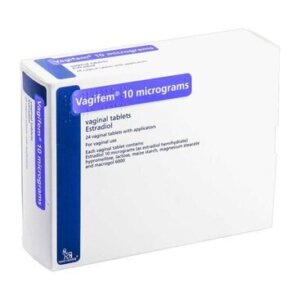
So how does it help? In a nutshell, exercise helps ADHD treatment by boosting dopamine and norepinephrine, which are important for focusing. Regular physical activity increases the levels of these neurotransmitters. Exercise also helps stabilize norepinephrine in the brain, affecting how we react to things. Regular physical activity improves the brain’s arousal center, making us less likely to get startled or overreact. It also helps reduce feelings of irritability. All these things are ADHD treatment goals. Let’s look at how it works and what kinds of exercises are best for those with ADHD.
What is ADHD?
Attention-deficit/Hyperactivity Disorder (ADHD) is a condition that affects how people behave. ADHD is considered a neurodevelopmental disorder, meaning it stems from how the brain develops. It usually involves challenges with paying attention, being overly active, and acting without thinking. ADHD isn’t due to laziness or lack of intelligence. Instead, it’s about the brain processing information differently. This condition is mainly linked to an imbalance of neurotransmitters, which are chemical messengers in the brain, particularly dopamine.
Common ADHD treatments include medications, supplements, and behavior management strategies. Some newer methods also suggest changes in diet and regular physical activity as helpful approaches.
Benefits of Regular Physical Activity for ADHD Treatment
Exercise is one of the best complementary treatments for both kids and adults with ADHD. Although regular physical activity offers many advantages to everyone, it has several specific benefits for those with ADHD.
Dopamine is a chemical in the brain that makes us feel pleasure and reward. People with ADHD often have lower dopamine levels compared to others. Many medications given to those with ADHD aim to boost dopamine to help them focus better and reduce symptoms.
Exercise is another effective way to raise dopamine levels. For people with ADHD, staying active can be especially beneficial because it might work like stimulant medications. In some cases, regular physical activity could even lessen the need for medication, but it’s crucial to talk to a doctor before making any changes to a medication plan.
Another bonus that may come with exercise is improving executive functions like planning, organization, and self-regulation. Executive function is important for tasks like paying attention, managing time, multitasking, and recalling details. The frontal lobe of the brain controls these skills. People with ADHD often have difficulties with executive functions, but some studies found that those with ADHD had significant improvements in these areas with regular physical activity.
Exercise plays a key role in helping children, especially those with ADHD, manage their behavior and improve their focus. Many kids with ADHD are full of energy, and exercise provides a healthy way to channel that energy. Studies show that regular physical activity can bring several advantages to children with ADHD, such as reducing aggressive behaviors, easing anxiety and depression, and decreasing social issues.
Recommended Types of Physical Activities for ADHD Treatment

Children can spend their 60 minutes of activity in various ways. Some options include riding a bike with family, playing sports like basketball, soccer, or tennis, and enjoying games like hide and seek with friends. They might also jump rope, play hopscotch, go hiking, or follow an exercise video. Group exercises designed for kids are another great way to stay active.
Regular physical activity is just as helpful for adults as an ADHD treatment as it is for children. An article published on the CHADD website titled “The exercise prescription” highlights the need for a structured approach to exercise. There is a need for structured workouts that are planned and part of a daily routine, either under the eye of a personal trainer or in a group setting where movements are coordinated. The purpose of having structure is that this can counteract a fundamental aspect of ADHD, where the problem is that “communication within the attention system is often patchy and disconnected. Therefore, the goal of ADHD treatment is to fill these gaps in order to decrease distractibility and any other symptoms that might be present. And this is just what exercise does.” There is also the need for variety within the exercise program with aerobic movements like squats, lunges, push/pulls, twists, and weight lifting. Attention must be paid to the acquiring new skills, especially in resistance and cardiovascular training. Most importantly, the program must have defined and measurable goals that are monitored and assessed. It is best to set incremental targets and to regularly review the outcomes, rather that defining an end-goal (for example running a marathon) that will be beyond reach.
Mixing different exercises can help keep you mentally engaged, which is important for maintaining focus with ADHD. Since adults often have busier schedules than kids, it’s a good idea to set aside a specific time each day for regular physical activity to help make it a habit.
Does yoga help with ADHD?
Practicing yoga can help alleviate symptoms of ADHD. Since yoga emphasizes breath control and mindfulness, it may assist with ADHD treatment and help people stay present and focused.
ADHD often makes it hard for individuals to concentrate, manage their energy, and control impulses. However, some studies indicate that yoga might be beneficial for those with this condition.
Regular yoga practice can strengthen the prefrontal cortex, a part of the brain that might be smaller or less active in some individuals with ADHD. This brain region is crucial for decision-making, planning, and concentration, which are typically more challenging for someone with ADHD to manage.
Incorporating Regular Physical Activity into Daily Routines: Practical Tips for Success 
Many individuals with ADHD often set exercise goals that are too high, which can lead to failure. Starting with a low level of regular physical activity is advised in many cases, like working out for 15 minutes twice a week. Then, it can progress toward a final target, maybe 30 minutes twice a week. The minimum goal will likely be easy to reach, and there’s a good chance the maximum goal will be exceeded, too. Achieving these goals feels rewarding and encourages sticking with regular workouts.
Tracking workouts can also help people with ADHD. Experts in ADHD therapy often advise hanging a calendar with an exercise schedule on the wall where it is easily visible, serving as a reminder. Marking the day when the exercise is done provides positive feedback. At the end of each month, it’s then possible to look back to see what has been accomplished and get a sense of progress.
Many people with ADHD don’t like having to adhere to a strict schedule, especially for exercising or doing chores. This can be addressed by adding some flexibility, such as planning several workouts in one day. That way, there’s a better chance that at least one planned session will be performed.
Whether through yoga or other physical activities, making regular physical activity a consistent part of the routine can support both adults and children in achieving their ADHD treatment goals.
Can ADHD get worse with age?
ADHD symptoms don’t get worse just because a person gets older. How symptoms appear depends on different factors. The positive thing is that many adults can handle their symptoms with the help of therapy and medicine.
Does ADHD affect memory?
People with attention-deficit/hyperactivity disorder (ADHD) often have significant problems with working memory. However, any issues they have with short-term memory are usually less noticeable.
What makes ADHD worse?
Lack of exercise, unhealthy eating, not getting enough sleep, and hormonal changes can worsen ADHD.
Do people with ADHD need more sleep?
Although there isn’t a clear answer on whether people with ADHD need more sleep, studies suggest they might do better by aiming for the higher end of the recommended 7-9 hours of sleep.
Do people with ADHD get angry easily?
Many people with ADHD experience issues with emotional control, especially anger. While anger might signal a related mood issue, it’s often just part of ADHD.


















